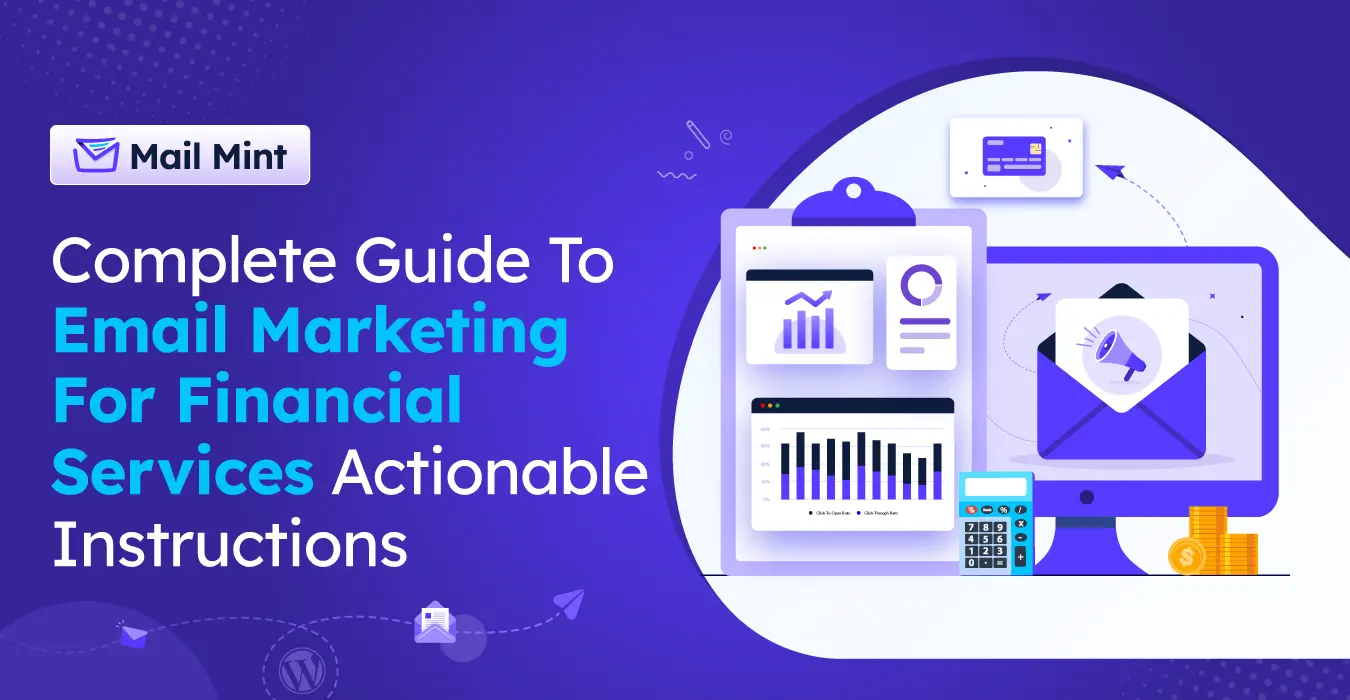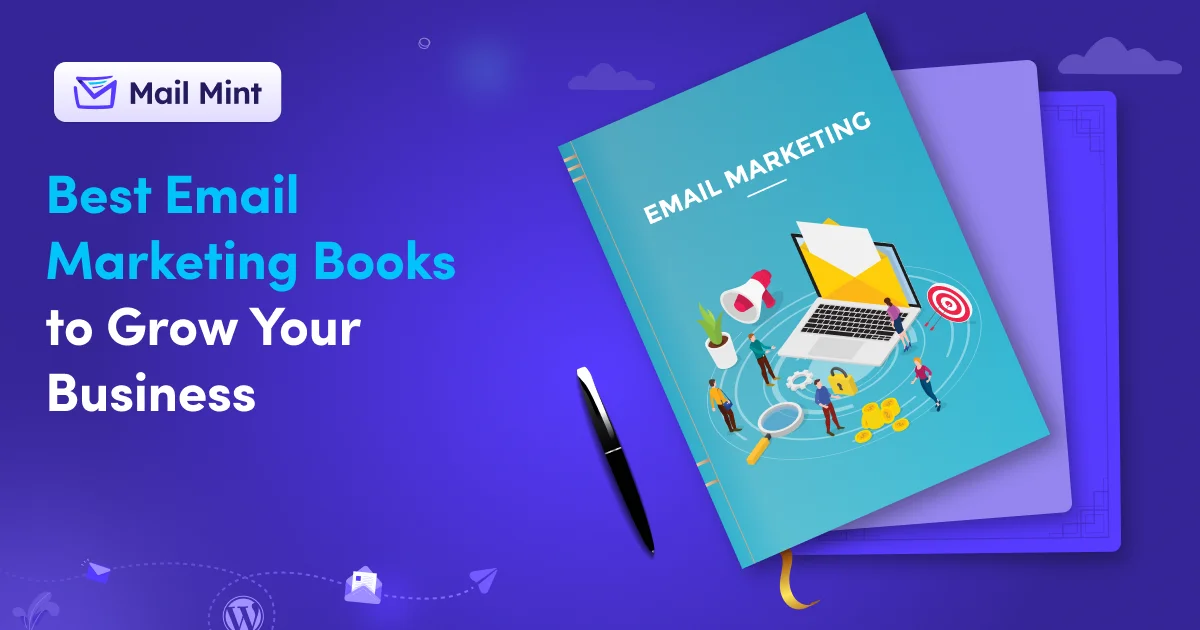With targeted email campaigns, you can connect with your audience on a personal level by delivering relevant content at the right time.
According to hubspot, most marketers reporting email open rates between 46-50%.
By using demographic segmentation, personalized marketing messages, and data insights, you can create campaigns that speak directly to your potential and loyal customers.
This method not only drives higher open rates but also builds stronger customer relationships, increasing conversions and loyalty. It’s all about sending the right message to the right person.
So let’s begin.
What is Targeted Email Marketing?
Targeted email marketing is a strategy that focuses on sending personalized and relevant emails to specific segments of your audience. For example, A clothing retailer segments its audience based on purchase history.
For loyal customers who often buy winter apparel, they send personalized emails showcasing new winter collections and special offers. Meanwhile, first-time buyers receive emails with welcome discounts and trending items.
What to Target with Your Email Campaigns
To make your email campaigns effective, here’s what you should target:
- Segmentation: Divide your audience based on characteristics like purchase history, demographics, or behavior. Tailor content to each segment’s interests and needs.
- Personalization: Use data to customize emails with relevant product recommendations, personalized offers, and addressing recipients by their names.
- Timing: Send emails at times when your audience is most likely to engage, based on their past behavior or industry trends.
- Relevance: Ensure that the content matches the recipient’s interests. For example, offer winter apparel to those who frequently buy winter clothes and trending items to first-time buyers.
- Engagement: Focus on content that encourages interaction, such as special promotions, surveys, or exclusive previews.
- Feedback: Regularly gather and analyze feedback to understand what works and adjust your strategies accordingly.
By targeting these areas, you can create more engaging and effective email campaigns that resonate with your audience.
It Starts With How You Collect Your Leads
While email marketing is the most effective marketing strategy, its success really depends on the quality of your leads. And this quality depends on how you collect your leads.
Let us look at an example to understand this better.
Suppose you have a “Subscribe to my weekly newsletter” form on your landing page to collect leads.
Now, while people subscribing through this form will be interested in your articles, it is unclear if they will be interested in your product/service.
However, let’s say you arranged for a free course on “How to plan discounts for your e-commerce store.”
The people who will subscribe to this course are most likely related to an e-commerce business in some way.
This means if you offer a service for e-commerce businesses, you will be able to convert many of these subscribers with the right offer.
In the example above, the first scenario was a generic way of collecting leads, while the second approach allowed you to identify what the prospect was interested in.
Hence, you will be able to personalize the emails more effectively and set up a more lucrative offer for the second set of leads.
Remember, while you collect your leads, you should segment leads as per your future marketing plans. This means you should have a pre-decided marketing purpose behind collecting leads.
Let me explain.
While basic digital marketing is all about getting traffic and conversion, as you dive deeper into marketing, you will realize that whether you have a good ROI or not will depend a lot on how much you can optimize your cost-revenue ratio. Hence, you can’t afford to waste time or money on poor leads.
The best way to maximize ROI is to run well-planned lead-generation campaigns before running a full-fledged marketing campaign.
What this will do is it will help you ensure you are not spending unnecessarily on acquisition costs or wasting time on fewer potential leads.
This, however, will be a bit different in the case of e-commerce stores. For e-commerce businesses, you would rather run instant email automation campaigns based on user actions. You will learn more about it later in this article.
Now, there are a few ways you can segment leads depending on the type of business you run and the marketing campaign you want to execute. And these will define the type of email campaigns you can run.
Let’s dive deeper into this matter.
How to Achieve Greater ROI Using Lead Segmentation & Targeted Email Campaigns
So, you have planned your next marketing campaign, and you are ready to start planning your lead generation efforts.
- How will you decide on a proper way to segment your leads?
- What should be the factors based on which you will segment your prospects?
- How do you set up a proper ‘targeted email campaign’ that works?
![Boost Your ROI With Targeted Email Campaigns – Complete Guide [2025] 2 Segmentation - Targeted Email Campaigns](https://getwpfunnels.com/wp-content/uploads/2023/05/Targeted-Email-Campaigns-1.webp)
Well, there are 3 main factors you can look at to segment your leads or run successful targeted email campaigns.
- Demography
- Purchase actions
- Specific interests
Let us look at each of them more closely.
1. Lead Segmentation & Email Campaigns Based on Demography
Demography mainly refers to the age, location, or gender.
And if you sell products that are exclusive to a certain type of demography, then you can segment leads accordingly and run relevant promotional campaigns for them.
For example, let’s say you sell home decor and have two locations – one in Germany and one in England – under the same brand.
In this case, what you can do is you can run a lead-generation campaign where you can ask people to sign up to get a discount coupon.
Depending on where they signed up, you can segment them into multiple lists in your email automation tool. In this case, you will have one list for subscribers from Germany and another list for subscribers from England.
Once you have enough leads, you can then run exclusive promotional campaigns where you can send offers via email on products that are popular locally. You can even send emails in the local language.
Similarly, if you have a t-shirt store where you sell t-shirts for both men and women, you can segment your customers accordingly after they make a purchase.
During Black Friday, you can run discount campaigns and increase conversion by sending separate emails to each ‘gender.’
Seemingly, you may design emails with a template more attractive to women and send it to its respective list, while having a more manly design for the emails you send to the men. This will help to increase conversion rates quite well.
2. Targeted Email Campaigns Based on Purchase Actions
If you run an e-commerce store where you have various categories of products, then it may be difficult to plan targeted email campaigns.
But if you can segment your customers based on the category of what they purchase, you might be able to run more profitable promotional campaigns.
For example, you could set automation where if a person purchases anything under “Computer accessories,” he will be on one list,
while a person purchasing a product under the category “House appliances” will be on another list.
In this case, when you have new supplies of computer accessories, you could run a discount campaign specifically for the respective list.
And since you know these people have computers and love to buy accessories online; there is a good chance they may purchase more if the discount is lucrative.
A person can be part of multiple lists. It’s fine and is rather a good thing. It just means you have more opportunities to sell to that person as he is likely to purchase from various category-specific promotions.
In the same way, you can also run email campaigns for first-time buyers with a certain coupon to have them come back and purchase a second time.
Another targeted email campaign that is widely used is the abandoned cart recovery campaign.
This doesn’t necessary require lead segmentation, but the campaign is aimed at bringing back and converting someone who was surely interested when he added the product to the cart.
The main idea here is to have specific campaigns that are designed to convert users based on their actions in your store.
You will either segment them into lists based on their purchase decisions or run immediate automated email campaigns depending on their actions in your store.
3. Qualifying Leads Based on Specific Interests
For high-ticket businesses like personal trainers, business coaches, or course creators, generating qualified leads is crucial. To identify prospects who are genuinely interested, focus on their specific needs and interests.
- Offer Free Resources: Create content that addresses common problems or interests. For example, a fitness trainer could offer a free guide on effective shredding techniques. This approach helps attract leads genuinely interested in your services, making your targeted emails more impactful.
- Set Up a Quiz: Use a quiz to determine your prospects’ specific needs.
For instance, a fitness trainer could run a quiz to identify goals like weight loss or muscle gain. This way, you can segment leads based on their answers and send personalized email campaigns.
- Showcase Expertise: Provide a free demonstration of your skills to build trust.
A digital marketing agency could offer a free website audit to highlight areas for improvement. This helps attract high-quality leads and allows for targeted marketing campaigns.
- Host Live Sessions: Offering free webinars or sessions can be very effective.
A counselor might provide a free 30-minute consultation, while a self-development trainer could host a free webinar. Attendees are likely to be interested in your services, making them prime candidates for targeted email marketing.
These strategies can help you collect and segment different types of leads effectively. It also enhances your email outreach ROI and ensures your targeted email marketing campaigns are more successful.
To get started, consider using email marketing software to manage your targeted email ads and track engagement levels.
Tips to Make Your Targeted Email Campaigns More Effective
![Boost Your ROI With Targeted Email Campaigns – Complete Guide [2025] 3 Targeted Email Campaigns](https://getwpfunnels.com/wp-content/uploads/2023/05/Targeted-Email-Campaigns-Tips-.webp)
So far, you have seen how you can segment your customers and run email campaigns accordingly. But that’s just half the task.
The success of your campaigns will depend largely on your email copy, the offer, and the USP you offer.
Following are some ways you can optimize your emails to get higher conversions.
1. Deep Personalization in Your Emails
Since you already know what your prospects are interested in, you should ensure your email subject line and your email copy are properly personalized.
For example, in the subject line, you could highlight the end result he will get (or, rather, he desires). “Double your conversion rates in only 2 weeks.”
And in the email copy, try to use ‘suspense’ and psychological triggers effectively. For example, if it’s a unique strategy you are selling through a challenge funnel, you could include the following in the email copy,
“You probably tried a lot of ways to improve your conversion rates. But I promise you, this one strategy will change everything.
– No need to work 8 hrs a day – rather work 8 hrs a week!
– Stop spending thousands of dollars on tools you don’t understand!
– Never regret your business decisions again!
All in all, take your next step to becoming a billionaire with this small 14-day challenge!”
The idea is to make sure you are hitting all the right keywords that your clients need help with.
If they see that you can understand their dreams and seem to have a plan to help them succeed, they will at least look into your offer.
2. Use AI to Speed Up Your Email Writing Process
This is an obvious one. Many of us aren’t that good at writing emails. It just seems very difficult to write a promotional copy in such less words (as it is ideal not to make an email too long).
But we are no longer on our own, thanks to ChatGPT. You can now easily write complete emails in a few minutes using ChatGPT.
All you need to do is provide proper instructions on what you are trying to convey in your email, along with specific ideas on the tone you want to maintain.
Now, the problem here is most of us think we can simply write the perfect instruction, and ChatGPT will deliver. But no, you have to correct ChatGPT with more instructions multiple times to get a suitable result.
Simply treat it like a human. Give an instruction, if the output is not right, it means ChatGPT did not understand the requirements properly.
So you can then further explain what was wrong and what should be the right approach in mind. For example, I initially gave the following instructions:
I have collected leads of people who may require my service to teach them how they can get more results out of Paid Ads.
Now, I want to offer my service at 50% off, but most importantly, I want to highlight the end results he will get after taking my service.
Write a persuasive email copy for this.It generated a very long email while highlighting the 50% offer more than the benefit of the service. So I further instructed:
Make the email short, and only mention the 50% off near the final CTA.As you can see, I was pretty straightforward with what I wanted. It then gave a more cluttered output which I did not like. So I gave more instructions:
No, I want it to be more specific. I have collected these leads via hosting free webinars, so maybe you can address that.
And I want you to use bullet points to breakdown the end results.This gave a very good email, but it still needed some work. So I gave one last set of instructions:
Do not use the term "I hope this email finds you well" and stop sounding too formal. Plus, you made the email long again.This time, the email was pretty good:
Subject: Exclusive Offer Inside: Unleash the Power of Paid Ads for Unbeatable Results!
Hi [Name],
I wanted to reach out to you following the insightful free webinar we recently hosted on maximizing the potential of paid advertising. As an attendee, I have an exclusive offer tailored specifically for you.
Imagine the remarkable results you can achieve by harnessing the true power of paid ads. Here's how my coaching program can help you transform your business:
1. Double Your Conversion Rates: Learn proven techniques to captivate your target audience with compelling ad copies and irresistible offers.
2. Outshine Your Competitors: Gain a competitive edge by unlocking advanced targeting methods.
3. Maximize Your ROI: Say goodbye to wasted ad spend and experience optimized ROI.
4. Scale Your Business Exponentially: Expand your reach and scale your business to new heights in no time.
Here's the best part: for a limited time, I'm offering an exclusive 50% discount on my premium coaching service, specifically for webinar attendees like you.
This is an exceptional opportunity to access my proven strategies and insider knowledge at an unbeatable value.
Don't miss out! Secure your spot now by clicking the link below:
[Insert Call to Action Button/Link]
If you have any questions or need further information, please feel free to reach out.
Let's revolutionize your paid advertising efforts together and pave the way for extraordinary success!
Best regards,
[Your Name]
[Your Title]
[Your Company]
[Contact Information]Now, this still needs some human touch, but it’s quite on point with the type of email I wanted.
And though it probably took you about 10-15 minutes to read these, it took me only 5 minutes to give those instructions and generate this great email.
Hence, using AI is not only more efficient in terms of time, but it is also a great way to get quality emails ready without much effort. This proves how AI in eCommerce not only saves time but also helps create smarter, more effective emails with ease.
You could use ChatGPT directly, use an AI copywriting tool such as CopyAI, WriteSonic, or Jasper, or you could use an email marketing tool that has integration with ChatGPT, such as Mail Mint, MailJet, Omnisend, etc.
3. Use an Email Automation Tool That Gives You More Control
You may have heard of using popular email marketing tools such as Brevo, ActiveCampaign, MailChimp, etc.
These are amazing tools, but whether you should use them for your targeted email campaigns will really depend on your CMS.
For example, if you are using WordPress and WooCommerce to run your e-commerce site, then you won’t have much control over the type of campaigns you can run.
In fact, if you want to run an email campaign for people who purchased a specific product, you won’t be able to do it.
You won’t even be able to suggest products dynamically to your buyers; you will have to manually design the product preview blocks in the email and link them to the products.
Rather, you should choose a tool that works natively. In the case of the example above, it’s better to use an email automation tool such as Mail Mint to set up your email automation campaigns.
Since the tool is a native WordPress plugin, you will have full control over when you want leads to be added to various lists and when to trigger automated email campaigns.
The idea is to use a tool that lets you organize your lead management and email campaigns with you in charge – your plan, your way of execution.
How to Run Targeted Email Campaigns in WordPress & WooCommerce Easily?
So far, you have learned in detail how you can segment leads and run well-planned email campaigns to convert your potential clients.
But, to execute the whole process, you will need to use the right tools to help you out.
1. Use A Reliable Funnel Builder
Since you will need to run a lead generation campaign, you will need a proper squeeze page with an opt-in form, followed by a thank you page.
You can use WPFunnels to create your squeeze page funnel quite easily. It is an easy-to-use funnel builder on WordPress that comes with a visual canvas to allow you to plan your funnel steps and then integrates with native page builders to help you design the funnel pages easily.
In fact, you can rather use one of the available funnel templates and make quick changes to get your funnel up and running really quickly.
**Templates are only available if you use Gutenberg, Elementor, Divi, or Oxygen. For other page builders, you have to design the pages from scratch and use the plugin’s shortcodes to make the funnel functional.
2. Use An Efficient Email Marketing Automation Tool
Mail Mint is a self-hosted email automation plugin in WordPress that can directly integrate with WPFunnels to help you collect and segment leads easily.
Normally, you can use Mail Mint’s lead form on your website (without using WPFunnels) to collect leads if you want to.
But using the two plugins together gives you an added benefit – a single visual canvas for funnels and email automation.
![Boost Your ROI With Targeted Email Campaigns – Complete Guide [2025] 4 Visual Funnel Builder - Targeted Email Campaigns](https://getwpfunnels.com/wp-content/uploads/2023/05/Screen-Shot-2023-05-25-at-9.35.03-AM.png)
The exclusive integration means on the same visual canvas where you set up your squeeze funnel, you can then define the email automation flows based on user actions in the funnels and automatically add the leads to specific lists.
For example, once someone submits the opt-in form, you can trigger an email to send him the link to the free resource and then add the user to a specific list for whom you want to launch your next email campaign.
Mail Mint also allows you to create lead segments based on the data you have of your prospects (which could be their basic details or any custom details that you may have collected).
Once you have the leads collected, you can then run personalized email campaigns whenever you want.
3. Set Up Purchase-Based Automation Flows for WooCommerce Stores
While you can collect leads, segment them, and send email campaigns to them using Mail Mint, another one of its specialties is automation for WooCommerce.
Since targeted campaigns for e-commerce don’t always involve a sales funnel or lead collection, you have to rely on a tool that can trigger email campaigns based on users’ purchase actions.
For example, you could set an automation flow for people who purchase a specific product, let’s say an ‘Avengers’ t-shirt, who will then be emailed with a discount coupon and product suggestion of more t-shirts that the buyer can purchase later on.
In this case, since you know the main interest of the user is a superhero t-shirt, you could personalize the email accordingly and showcase other superhero t-shirts for the user to look into. The coupon will act as an extra push.
**Meanwhile, you could also think about running personalized sales funnels depending on what the user has added to the cart and offer them relevant products such as order bumps and upsells. These could easily be created using WPFunnels’ Global funnels feature.
Conclusion
To make your targeted email marketing effective, focus on delivering relevant content to your audience.
Segment your customer base and use personalized emails based on their preferences and actions. Automate your campaigns with email marketing tools to facilitate the process and improve results.
This approach enhances engagement, increases conversions, and builds stronger relationships with your customers. It also helps to lead to higher open rates and better overall ROI.
For streamlined automation and personalized targeting, consider using Mail Mint to optimize your email marketing efforts.
** FAQs **
How Do You Write a Targeted Email?
- Begin with customer personas and demographic data to segment your audience. Personalize the email with names and interests, use dynamic content relevant to their preferences, and include a clear call-to-action for desired actions.
Who Should You Target for Email Marketing?
- Focus on existing customers for upselling and potential customers who’ve shown interest. Segment by customer actions and specific needs to send personalized email messages that are relevant and timely, including those with abandoned carts.
What Is the Target Email Format?
- Use a catchy subject line and start with a personalized greeting. Include engaging content that meets their specific needs and a clear call to action. End with a friendly sign-off and contact details to maintain customer communications.
How Can You Measure the Success of Targeted Email Campaigns?
- Track open rates for subject line effectiveness, click-through rates for content engagement, and conversion rates for achieving desired actions. Review unsubscribe rates and overall engagement levels to gauge your targeted email marketing efforts.
What Are Common Mistakes in Targeted Email Marketing?
- Avoid sending generic content and failing to segment properly. Ensure emails are well-timed and mobile-friendly. Overloading with information or neglecting dynamic content can lower engagement levels and affect customer loyalty.






![Boost Your ROI With Targeted Email Campaigns – Complete Guide [2025] 1 Targeted Email Campaign](https://getwpfunnels.com/wp-content/uploads/2024/09/Targeted-Email-Campaign-.webp)
![Woocommerce Email Marketing Guide- Best Strategies & Tools [2024] 5 Woocommerce Email Marketing Guide](https://getwpfunnels.com/wp-content/uploads/2023/06/Ecommerce-Email-Marketing-Copy.webp)




![16 Best Email Testing Tools to Improve Email Performance & Deliverability [2025] 10 Best Email Testing Tools To Improve Email Performance](https://getwpfunnels.com/wp-content/uploads/2023/10/Email-Performance.webp)